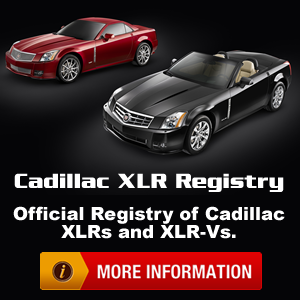I have been doing a lot of research regarding the bolt on, rear mounted (yes kinda different), twin turbo system offered by STS turbo systems.
http://www.ststurbo.com/
They offer a bolt on kit for the Corvette and have several articles / videos regarding the addition of the turbos. I figured the XLR would be very similar to the Corvette since they are built with much of the same components. The twin turbo system is rear mounted and takes the place of the mufflers. There is a remote oil pump which feeds lubrication from the engine compartment to the thirsty turbos.
I have contacted STS and inquired about the addition of the Turbo system on an XLR. I was especially curious / concerned about adding a turbo system to a vehicle with a 10.5:1 compression ratio. They advised me in an email that I would be ok if I kept the boost level around 5 psi.
My questions for the forum are has anyone else had any dealings with Squires turbo systems (either Corvette, XLR, or other)? Second, am I correct to be somewhat nervous about adding a trubo with the XLR's high compression ratio? Lastly, I am concerned about re-programming the XLR's as from what I understand there have been mixed results from other owners attempting to update the XLR's programming.
Thanks in advance for the assistance.
Hi Cadiblk ,
There's a place in New Jersy that mounted twin turbos in the rear of an 06 C6 Corvette that I contacted last year to see if they would do the same to my 06 XLR and they turned me down because even though the chassis is the same as the Corvette, they had no info on the Northstar engine and could not retune the ECU.
The cost for doing it to a Corvette was close to $17K.
I have increased my hp from 320 to 385 by adding a Volant CAI, Corsa exhaust,(added these first which increased the hp from 320 to 360), twin eRam electric superchargers from eRacing Motorsports in Aptos, Ca. and a nineth fuel injector which is a Cold Start injector for a 87 Corvette.
You can buy this part from gmpartsdirect.com for less than $50.00 I think or from your local auto parts store for less the $100.00. This injector has a nice umbrella pattern which is perfect for a good fuel to air mixture in the intake chamber of the engine.
I mounted it at about 10 o-clock on the intake chamber, behind the Throttle Body Butterfly unit. Mounting it at this angle allows clearence for the engine cover. This injector has a mounting flange that requires two 1/4-20 bolts and a 3/4 inch center hole for the injector nozzle which makes it easy to mount. The nozzle reduces to about 1/4 inch in Dia. and extends to just about center of the chamber opening.
A WORD OF CAUTION, DO NOT USE NUTS AND LOCK WASHERS INSIDE THE INTAKE CHAMBER MOUTH AS IF THEY COME LOOSE THEY'LL GET SUCKED INTO THE ENGINE AND CAUSE EXPENSIVE DAMAGE.
To mount the injector:
1. Remove the engine cover.
2. Remove all of the air intake filter components from the Throttle Body.
3. Remove the 4 mounting bolts that attach the Throttle Body Unit to the Chamber input. (You'll need a new gasket when you re-mount this unit.)You do not have to unplug this unit, the wires to it are long enough to sit it aside for good access to the Intake Chamber input.
4. Stuff a clean shop rage into the intake chamber to prevent any metal chips from getting into the chamber when drilling and tapping the mounting holes.
5. Use the gasket that comes with the injector as a template to mark the mounting holes.
6. Drill and tap the two 1/4-20 mounting holes and the 3/4 inch injector nozzle hole. MAKE SURE THESE HOLES ARE INLINE WITH THE FRONT AND BACK OF THE VEHICLE.
7. Because you're mounting this on a curved rather than a flat surface, you should use some plyable gasket compond materal on both sides of the injector gasket to insure a good seal.
ANOTHER WORD OF CAUTION HERE, DO NOT OVER-TIGHTEN THE 1/4-20 BOLTS BECAUSE THERE IS ONLY A LITTLE MORE THAN ONE THREAD HOLDING THE INJECTOR IN PLACE. THE LENGTH OF THESE BOLTS SHOULD HAVE NO MORE THAN 1/4 INCH OF THREAD WITH A SPLIT LOCK WASHER ON IT. THE SPLIT LOCK WASHER SHOULD BE LESS THAN 1/8 INCH THICK AND JUST TIGHTEN THE BOLTS ENOUGH TO COMPRESS THE SPLIT LOCK WASHER. I ALSO RECOMMEND USING "LOCTITE" ON THE THREADS OF THE BOLTS. You can purchase this at almost any auto parts store.
Now that takes care of mounting the nineth fuel injector.
Replace the Throttle Body Unit. (Don't forget to use a new gasket here.) And replace the Intake Air Filtration System.
Connecting the injector to the injector fuel line is simple, but there is a few parts you'll need. First, locate the Fuel Injection Bleeder Valve. It's located on the stainless steel tubing just left of center over the Intake Chamber facing to the front of the vehicle. There's a black screw on cap that looks like an over-sized tire valve stem cap. Remove this cap and you'll see an internal valve just like the ones in the tire valve stems. DO NOT PUSH THIS VALVE AS IT WILL SPRAY GASOLINE ALL OVER YOU AND YOUR ENGINE!!!
Note the Valve Body configuration. It's designed to mate with a standard flange type tubing. You'll need an adaptor to convert from this to flexible injector fuel line hose.
Next, you'll need a metric bolt and what is called a "Banjo Fuel Line Fitting" that mounts on top of the injector and about 1 foot of "High Pressure Fuel Injector Hose" that matches the size of your fittings. DO NOT USE ANYTHING OTHER THAN FUEL INJECTOR HOSE!!! You'll also need two hose clamps of the correct size for the hose.
Foot note: I had a hard time finding the metric bolt and the mating Banjo fitting for the fuel injector and I would suggest that before mounting the fuel injector, you take it to your local auto parts store and explain to your salesman what you want as GM had a different method of connecting this to the injector fuel line. I have about a dozen auto parts stores in my local area and I only found one that had the kit that fit the fuel injector. The name of that store was Peerless Auto Parts which is a private store, not a chain. If you have trouble finding the kit, I'll get the name and address of the manufacturer and foreward it to you.
When you have all the components for hooking up to the injector fuel line, and the vehicle has set and the engine is cold (for safety sake) you'll need to releave the fuel line pressure. Place a dry rage under the pressure releave valve and a small can that will fit under the valve but with a large enough opening that you can catch most of the gasoline while the pressure is being releaved.
NO SMOKING DURING THIS OPERATION AND IF YOU HAVE A FIRE EXTINGUISHER, IT WOULD BE A GOOD IDEA TO HAVE IT CLOSE BY JUST INCASE!!!
To safely releave the pressure, remove the gas cap and leave it off until you have completed this operation. This will prevent the pressure from building up while you're completing the connections from the fuel line to the injector.
Using a tire valve stem valve removal tool, slowly unscrew the internal valve until the gasoline starts running into the can. Once the pressure has been releaved, remove the valve and the catch can and if the rage is soaked with gasoline, replace it with a dry one to catch any gas that my drip while completing this operation.
Now screw on and tighten the flange to hose adaptor onto the pressure valve fitting.
Assemble the Banjo fitting and metric bolt assembly. Make sure there are two copper washers, one goes between the top of the injector and Banjo fitting and the other goes between the Banjo fitting and under the metric bolt head.
Just screw the metric bolt down finger tight for now and have the hose fitting portion pointing toward the rear of the vehicle.
Place one of the small hose clamps on one end of the fuel line hose and attach it to the flange to hose adaptor and tighten the hose clamp.
Make a downward 360 degree loop and line it up with the Banjo hose connector. Cut off any excess hose and slip on the other hose clamp and attach the hose to the Banjo fitting and tighten the clamp.
Now tighten the metric bolt.
Replace the gas cap and the engine Oil cap but not the engine cover so you can start the engine and check for any gas leaks.
It would be a good idea to have someone in the driver's seat ready to shut off the engine while you watch for leaks!
If there are no leaks, proceed with the electrical connections.
The electrical connection was easy. I used two small female quick disconnect wire terminals (Red) that pluged into the flat pins on the top of the injector and wired into the circuit of the eSuperchargers. That way, the injector is only active when the eSuperchargers are active.
(The reason I had to install this nineth fuel injector was because the eSuperchargers changed the intake manifold pressure from 0 psi at full throttle to + 1.5 to 2 psi and the ECU would not increase the fuel to air ratio giving me a lean mixture check engine code.
If you have an earlier or later than the 06 base model that I have and your ECU can be reprogrammed, you probably won't need the nineth fuel injector to make the Twin eSupercharges work.)
Now install the eRam eSuperchargers per the manufacturer's instructions.
The twin eSuperchargers and nineth fuel injector increased my hp by 25 horses and it only cost me just under $1K and I didn't have to have the ECU retuned. The eSuperchargers mounted to the Volant CAI and they came with smaller (in length) K&N filters and fit perfectly in place of the larger filters.
D3 tried to retune my ECU when I had them install the CAI and Corsa exhaust but my 06 has the ECU that is hard coded and can not be electronically reprogrammed.
The beauty of the eSuperchargers and the nineth fuel injector is they are controlled by a micro switch mounted behind the gas pedal and are only activated at full throttle. Pedal to the metal! Which results in still getting 28 to 30 mpg on the highway as long as you DON'T PUT YOUR FOOT IN IT!!
If you want more info from e-Racing Motorsports, their web site is;
http://www.electricsupercharger.com
email:info@electricsupercharger.com


 :
:


